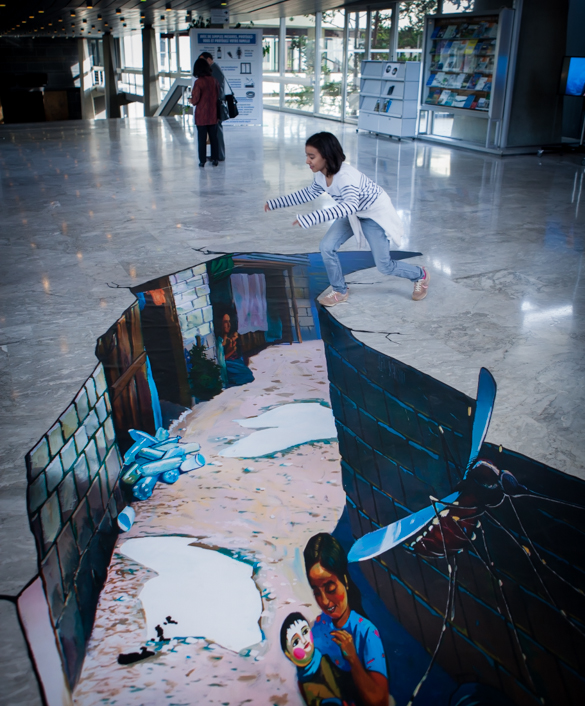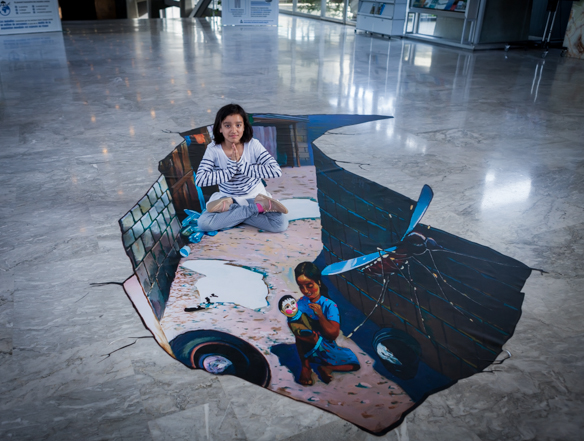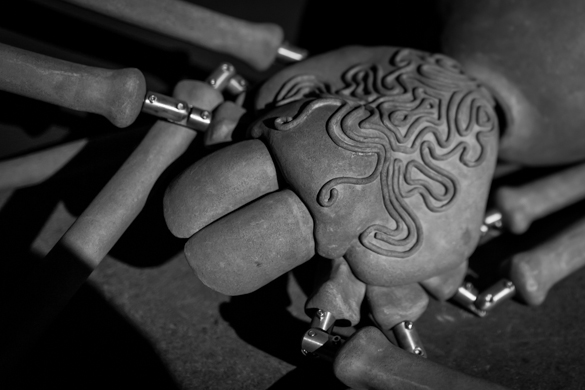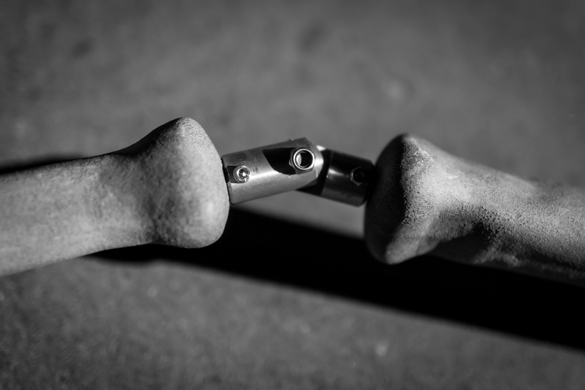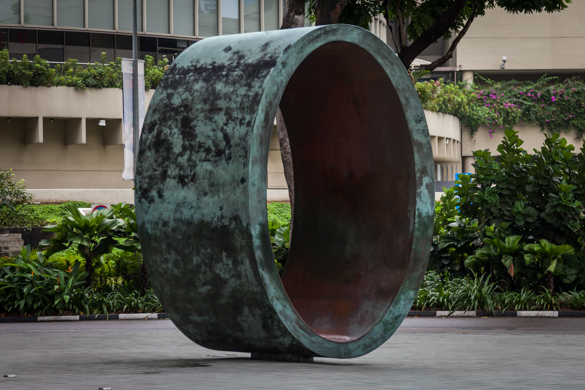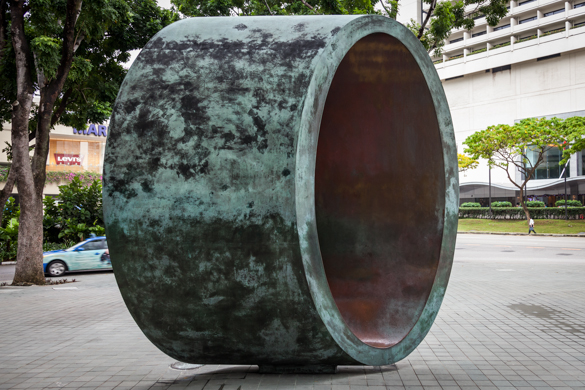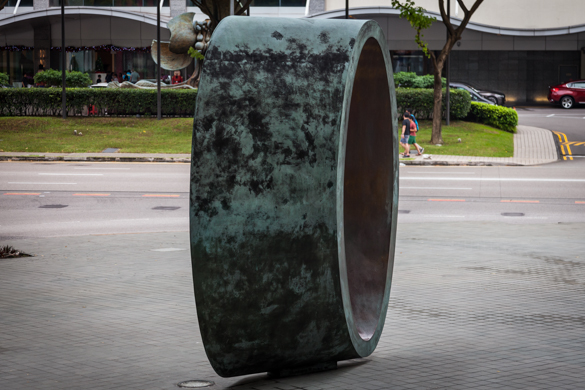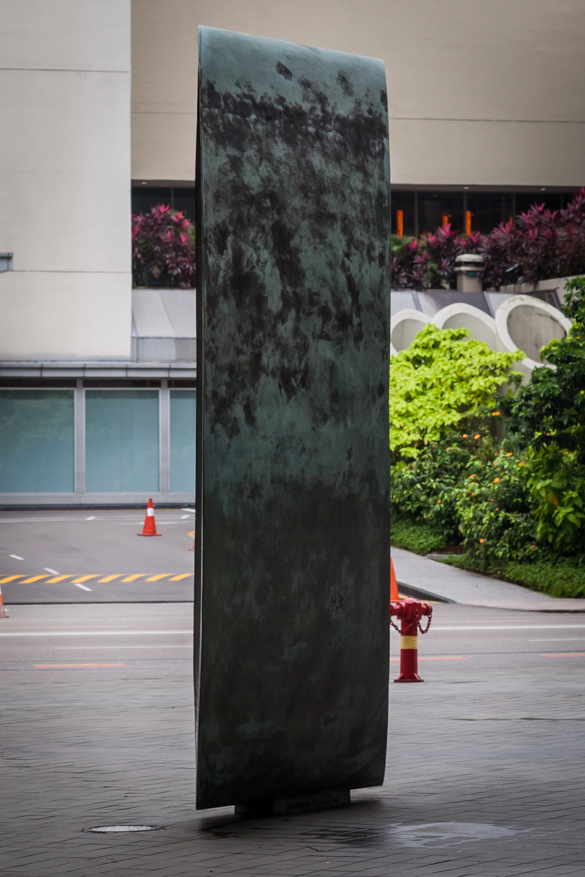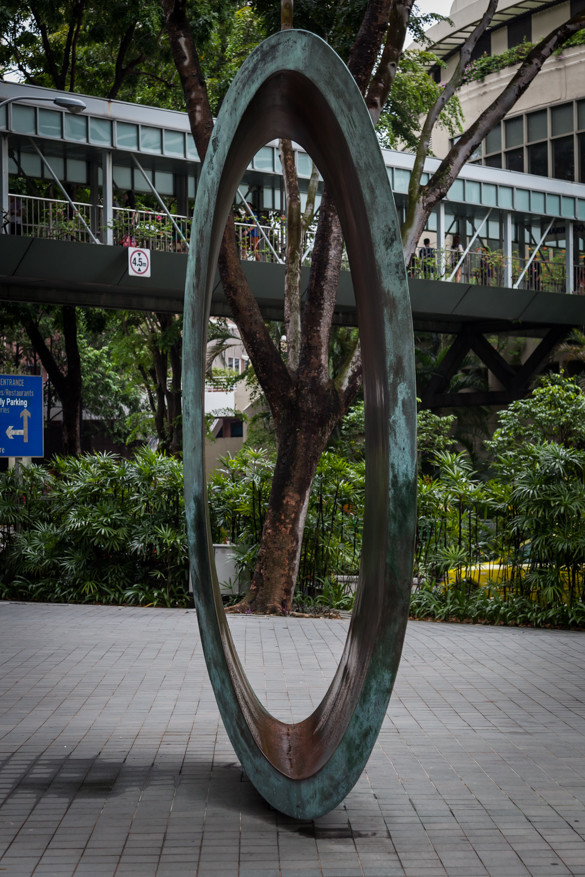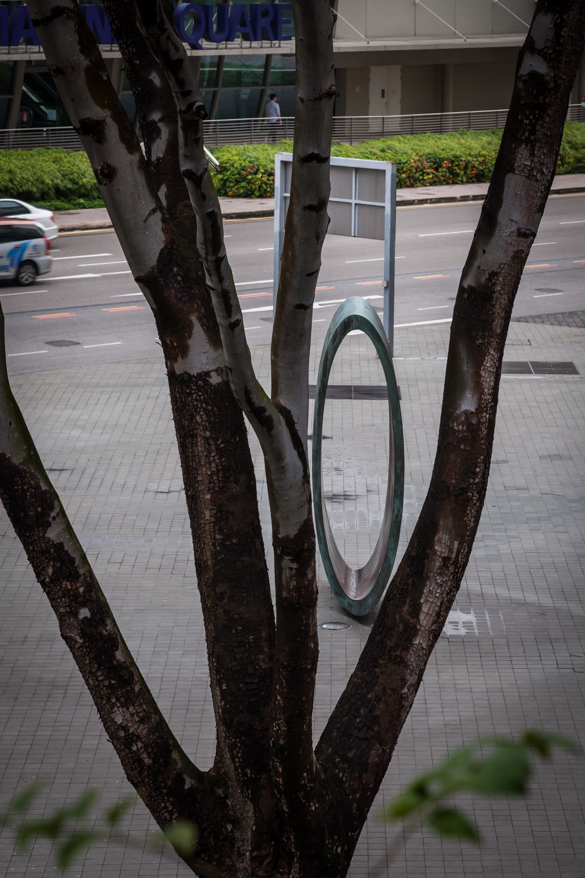“Mosquitoes, flies, ticks and bugs may be a threat to your health, at home and when traveling”, says the World Health Organization (WHO) on this year’s World Health Day. In an attempt to draw attention to so called “vector-borne diseases”, and explain how to prevent them, the Geneva-based organization made a vertigo-inducing floor painting at their headquarter and at London Heathrow Airport. Together with my daughter, we had the chance to swing by WHO to check it out. Take a look at this mind-boggling piece!
Now, what are we looking at…? A cracked road? A hole? A look into the future? Or the past? We see a giant, evil-looking, mosquito buzzing away from a little girl holding an ill-looking doll in her arms. A woman with a baby sitting next to a pile of trash. A water-filled car tyre. A pile of something blue. The illustration-illusion-thingy makes us wonder who these people are, if they are good health, and whether the skeeter has bitten them or not!
Like Josi and me, most people stop, look, smile, jump and have their photo taken next to the “3D illustration” that was developed by London-based Red Door Communications. What a clever way to catch people’s attention! At Heathrow, WHO used the floor painting as a platform to test air travelers’ knowledge about malaria, dengue, schistosomiasis, leishmaniasis, onchocerciasis and other unpronounceable diseases. Take a look here:

